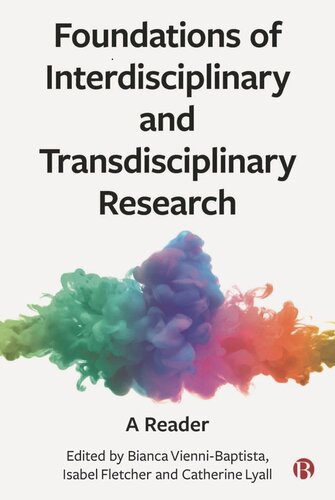

Most ebook files are in PDF format, so you can easily read them using various software such as Foxit Reader or directly on the Google Chrome browser.
Some ebook files are released by publishers in other formats such as .awz, .mobi, .epub, .fb2, etc. You may need to install specific software to read these formats on mobile/PC, such as Calibre.
Please read the tutorial at this link: https://ebookbell.com/faq
We offer FREE conversion to the popular formats you request; however, this may take some time. Therefore, right after payment, please email us, and we will try to provide the service as quickly as possible.
For some exceptional file formats or broken links (if any), please refrain from opening any disputes. Instead, email us first, and we will try to assist within a maximum of 6 hours.
EbookBell Team

4.1
60 reviewsThis groundbreaking reader is designed to lower the barriers to interdisciplinarity and transdisciplinarity in research. Edited by experienced researchers from a range of different fields, it paves the way for future scholarship and effective research collaborations across disciplines. Chapters offer extracts from key academic texts on topics such as the design, funding, evaluation and communication of research, providing those new to the field with a thorough grounding. They highlight examples of interdisciplinary and transdisciplinary triumphs – and challenges. Concluding each chapter is a commentary provided by practitioners from diverse backgrounds, many of whom are themselves developing new approaches to inter- and transdisciplinarity. The book is: • the first ever comprehensive reader for interdisciplinarity and transdisciplinarity; • essential reading for those seeking to become effective collaborative researchers; • complete with concise introductions, extracts, commentary and further reading in each chapter. This is a much-needed primer that improves our understanding of the characteristics of interdisciplinarity and transdisciplinarity, unlocking their exciting potential in research and teaching within and beyond academia. Introduction chapter is available Open Access under CC-BY-NC-ND licence.